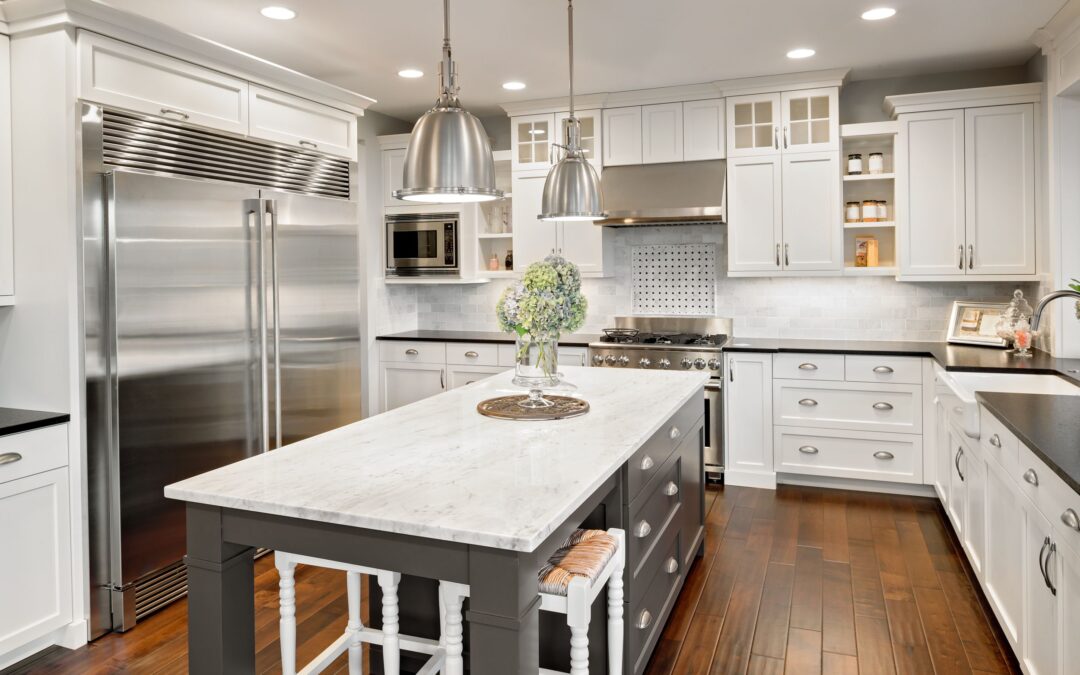The kitchen is often considered the heart of the home. It’s where meals are prepared, family members gather, and memories are made. Whether you’re looking to enhance the functionality of your kitchen or give it a stylish makeover, a kitchen remodel can breathe new life into this essential space. Proper planning and design inspiration are crucial to ensure a successful and satisfying kitchen transformation. In this article, we will explore the key aspects of kitchen remodel planning and provide you with design inspiration to create the kitchen of your dreams.
- Assessing Your Needs and Goals: Before diving into the design process, take some time to assess your needs and goals for the kitchen remodel. Consider how you currently use the space and identify any pain points or limitations. Do you need more storage? Would you like to improve the flow and functionality? Are you aiming for a more modern or traditional aesthetic? Defining your needs and goals will guide the entire remodeling process.
- Setting a Budget: Setting a budget is a crucial step in any remodeling project. Determine how much you’re willing to invest in your kitchen remodel and allocate funds to different aspects such as cabinetry, appliances, countertops, flooring, and lighting. Be realistic about what you can afford and prioritize the elements that are most important to you. Remember to keep a contingency fund for unexpected expenses that may arise during the project.
- Planning the Layout: The kitchen layout plays a vital role in its overall functionality. Consider the classic kitchen work triangle, which connects the sink, stove, and refrigerator. This layout ensures efficient movement and workflow. Depending on your space and preferences, you may opt for a U-shaped, L-shaped, or galley kitchen layout. It’s essential to plan for ample counter space, storage, and proper placement of appliances to create a practical and ergonomic design.
- Selecting the Right Materials: Choosing the right materials for your kitchen remodel is key to achieving both aesthetics and functionality. Cabinets, countertops, backsplash, flooring, and lighting fixtures should complement each other while meeting your practical needs. For instance, opt for durable and easy-to-clean materials like quartz or granite for countertops. Consider the visual impact of your choices, ensuring that the colors and textures blend harmoniously to create a cohesive design.
- Embracing Natural Light: Natural light can transform the atmosphere of a kitchen, making it feel brighter, more spacious, and inviting. If possible, incorporate windows or skylights to maximize natural light. Consider the orientation of your kitchen and plan the layout accordingly to optimize daylighting. If natural light is limited, strategically placed artificial lighting can make a significant difference in creating a well-lit and comfortable space.
- Adding Smart Features: As technology continues to advance, incorporating smart features in the kitchen can greatly enhance convenience and efficiency. From touchless faucets and voice-activated appliances to smart lighting and automated blinds, these innovations can streamline tasks and make your kitchen experience more enjoyable. Evaluate which smart features align with your needs and integrate them seamlessly into your design plan.
- Finding Design Inspiration: When it comes to design inspiration, there are numerous sources to explore. Browse home improvement magazines, visit kitchen showrooms, and create mood boards on platforms like Pinterest to gather ideas. Consider your personal style and the overall aesthetic of your home while seeking inspiration. Don’t be afraid to mix and match design elements to create a unique and personalized kitchen space.
Remember, a kitchen remodel requires careful planning and attention to detail. Consider consulting with professionals such as kitchen designers, contractors, and architects to ensure that your vision aligns with practical considerations and building codes. Their expertise can help you avoid costly mistakes and achieve the kitchen remodel of your dreams.
In conclusion, a kitchen remodel can transform your cooking space into a functional, beautiful, and inspiring area within your home. By assessing your needs, setting a budget, planning the layout, selecting the right materials, embracing natural light, incorporating smart features, and seeking design inspiration, you’ll be well on your way to creating the kitchen you’ve always dreamed of. Happy remodeling!


